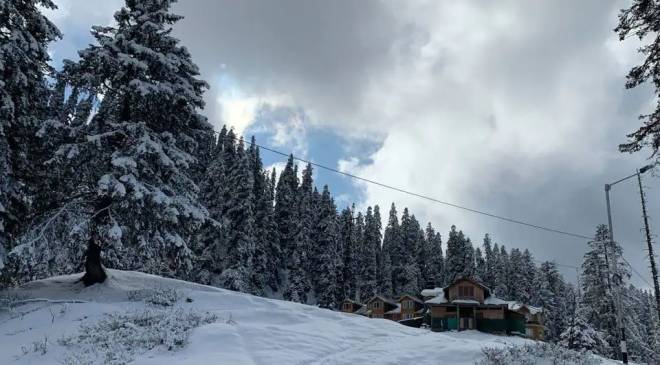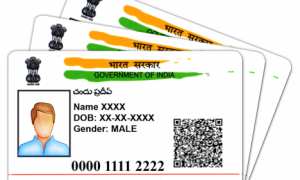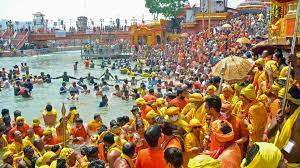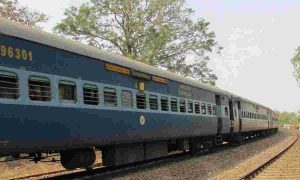Kashmir Travel Itinerary: Kashmir is one of those places where you feel as though you are wandering in an incredible world. Kashmir is sometimes referred to as paradise because of its stunning scenery. Along with this, there are a ton of sites for worship, hiking trails, lakes, gardens, shopping centres, and mouthwatering delicacies that you have never tried. This wonderful location offers travellers a singular lodging option in houseboats, five-star hotels, and resorts, giving them a cause to remain and travel to Kashmir repeatedly.
We recently visited Kashmir from 15th June to 21st June 2022. It was a 6N/7D trip. It was pre-planned by Makemytrip.com.
The itinerary for this dreamy, outstanding vacay is as follows:
Day 1: Srinagar Part 1
Early morning flight from Delhi to Srinagar. Arrive at Srinagar airport around 11:30 am. Pick up by a designated driver in a comfortable sedan, he accompanied us for most of our journey. It is said that Srinagar was founded by king Asoka. Signifying a rich tradition and ethereal beauty, Srinagar on the banks of river Jhelum is a city of lakes and gardens. There are in fact 6 UNESCO WORLD HERITAGE SITES in and around Srinagar. Our 1st stop was at Shalimar Bagh, one of those sites, followed by Nishat Bagh. Beautiful Mughal architecture, well maintained. Highly recommended. These gardens including Chasme Sahi and Pari Mahal (that we visited later on our tour) are remnants of later Mughal architecture. In line with the famous Lodhi Gardens in Delhi, the architecture of these gardens bears intricate details of Mughal craftsmanship and intelligent usage of pavements and nearby water bodies. Constructed on the eastern bank of Dal Lake and nestled against the Zabarwan mountain ranges, these gardens feature a terraced layout with linear sections beautifully representing the Chahar Bagh concept of Persian/Mughal architecture. another distinctive feature is an equivalent view of Dal Lake from every layer/terrace!! Shalimar Bagh was earlier used for holding darbars and courts too. Whereas Nishat Bagh was used for private sojourns of the emperor and empress and their folks.
We had lunch at Sunset Boulevard (taken by the driver, personally would not recommend it). Followed by shopping around Dal Gate for local curios and handicrafts from one of the state-run emporiums. Transfer to Lake Victoria Group of Houseboat opposite ghat no. 9 on Dal Lake. Nice ambience, good hospitable staff. The foods and tea served were homely and tasty. Shikara ride for 1 hour at 5 pm around Dal Lake covering the floating market, cottage industries on the lake and numerous floating vendors with a plethora of local interesting items. Quite picturesque and enjoyable, shouldn’t be missed at all.
Day 2: SonMarg
Complimentary breakfast on the houseboat, followed by transfer to the cab. The journey towards Sonmarg is quaint and beautiful, with roads frequented with willows, walnuts and apricot trees and river Sind flowing voraciously on one side while large paddy fields on another side are worth a sneak peek. On arrival at Sonmarg-meadow of gold, we hired ponies to reach Thajiwas glacier point, beneath the Thajiwas peak. 2 ponies and the guide for Rs 4500. They were quite friendly and experienced and we reached our destination within an hour. Breathtaking views, surreal locale. We spent an hour there, but it started raining. Few stalls selling tea, coffee and light snacks were there, obviously quite expensive. Many vendors selling saffron, silajit, kahwa thronged the area but wouldn’t recommend buying from them. Photographers were found in plenty too, who would take good quality photos for a nominal charge. Check-in at Country Inn & Suites by Radisson with complimentary dinner and breakfast. Beautiful rooms with great service. Views of the forest block from the windows were spectacular. Sprawling selection of food. Their north Indian items were more delectable. Since it rained all evening and night, we dropped our plan to visit zero point near Zozila and stayed in.
Day 3: Pahalgam
We boarded our cab early in the morning for an exhilarating journey to Pahalgam. En route, we stopped at Pampore, with miles of saffron fields to visit dry fruit shops. Tourists hoarded these places. More on the expensive side, the quality of dry fruits (mostly alpine nuts and various berries) and the world-famous Saffron is undoubtedly superior. We shopped to our heart’s content at one of the largest chains (Zamindar Kesar Company). On our way, we also noticed sports goods shops where they manufacture legendary original willow wood bats. We stopped at one of the orchards at apple valley to witness apple trees filled with bounty and taste freshly squeezed apple juice, a unique experience in itself. River Lidder accompanied us all along Anantnag. River rafting facility available near Pahalgam post-Nunwan. Reached Pehalgam around 2.30 PM and checked into our hotel, Hotel Outlook. Location-wise it’s a great one in the city centre. We had lunch at a hotel with light refreshments. We hired ponies (price, bargaining needed) from outside the hotel and set out for Baisaran valley (aka. Mini Switzerland of India according to the locals). The route was through various picturesque points like Pahalgam valley, Kashmir valley viewpoint, waterfalls etc. through the Lidder forest block. The pony rides themselves were quite thrilling as there were few sharp turns and trails. The meadows on both sides were under a carpet of wild summer flowers (mostly daisy, carnation and lupin) making it a heavenly view throughout. There was a nominal entry fee at the gate of the valley where tourists were mounted off. Ponies were not allowed inside the valley. Inside, there were a few tea stalls and bio-toilets too. The views were simply worth the wait! It indeed was a splendid view with snow-capped peaks of Pir Panjal in the backdrop and evergreen alpine trees forming a silhouette I remember reading in poems only. I would insist everyone visit these meadows at least once. Other than taking a lazy stroll and taking innumerable pictures capturing the beauty of this place, there’s not much activity here. We spent about 40 minutes here and embarked on the return journey. Took beautiful pictures of other viewpoints this time. The trail mostly consists of Salix spp, Morus spp, Fragaria spp, Rosa spp and Juglans regia. Our guide was a young lad, quite informative and smart. We returned to our hotel and retired for the day while it rained all night.
Day 4: Aru Valley, Chandanwari and Betaab Valley
Despite the incessant rain, post a hearty breakfast we set out for Aru valley. We were provided with a different driver and car for the day. Aru has located around 12 km from Pahalgam, upstream of river Lidder. The valley is a beautiful one with Kolhoi ranges visible from there and a thick belt of pine trees all around. The surrounding village is a well-known spot among trekkers aiming to reach the Kolhoi Glacier and Tarsar-Marsar lakes. For normal tourists and dendrophiles like me, it’s heaven for its undulating meadows, scenic beauty and evergreens and river Aru flowing by. Prominent trees noted by me are Fraxinus spp, Pinus spp, Juniperus spp, Juglans regia, Acer spp, Padus cornuta, and Pyrus lanata to name a few. Since it was raining throughout, we could only spend a short time there and rushed to our car, stationed near the entrance. There are lodges and hotels for those who aim to spend a day or two there. The tourist point is inside the biosphere reserve, with the black bears as the keystone species along with endangered deer, stags and birds. For tourists staying inside the valley, they could easily explore the alpine lakes and meadows around this large valley as well as go for various river activities.
From Aru, we went to visit Chandanwari (not in our pre-printed itinerary but fixed by the driver), 16 km from Pahalgam, the famous base camp for Shri Amarnath Yatra. The roads are quite narrow leading to frequent queues of traffic. When we reached this place, the base camps, and langars were being made ready for incoming footfalls. There was hustle and bustle of mini settlements and community kitchens, makeshift clinics everywhere. It’s a picturesque place with glacier moraines all around and Lidder flowing at arm’s distance.
On the last leg of the Pahalgam tour, we went to Betaab valley. Earlier known as Hagan valley it was rechristened after a Bollywood hit movie was shot there. There is an entry fee at the entrance to the valley. Apart from natural beauty, this valley is a well-curated, well-maintained place ideal for a day out or picnic. River Lidder flows through it with lush green meadows on both sides. Sprawling, jaw-dropping beauty. Though it was raining quite heavily when we visited, the sight everywhere was so refreshing that I would cherish it in years to come.
We stayed at hotel Outlook in Pahalgam, in spite of the friendly staff our stay there was not memorable since the hotel doesn’t have a skywalk or porch to connect adjoining buildings. Guests have to run through the rain to reach the restaurant or reception! There was no laundry service. The room heaters were not on!! The room provided to us on the 2nd floor below the attic wasn’t well maintained.
Day 5: Gulmarg
Post checkout, we started for Gulmarg, around 3.5 hours from Pahalgam. Gulmarg-meadow of flowers is the apt name for this quintessential dreamy destination. As the road turned at Tangmarg, our driver stopped at a shop where we needed to rent snow boots and puffer jackets since it was snowing above, we hired a local guide from there as well. Nestled along the Pir Panjals with Apharwat Peaks overlooking, Gulmarg is an idyllic holiday destination. Carpets of wildflowers viz. daisy, iris, lupin, buttercups, forget me not and wild roses would welcome tourists from every corner and meadows are full of these gems along with wild strawberries growing in bunches. There was a thick blanket of fog spiralling through as we rose above. We checked in to our hotel Grand Mumtaz, got ready and headed for the famous Gondola ride. The two-phase gondola ride is the second highest and second longest in the world making it the top attraction. Tickets need to be booked online beforehand. The first phase from Gulmarg to bowl-shaped Kangdori (2600 m elevation) is a 9-minute ride overlooking a dense forest of the Gulmarg biosphere reserve whereas from Kangdori-to-Kangdori mountain on the shoulder of Apharwat peak takes 12 more minutes (3747 m elevation). Since there was dense fog and rain all around Gulmarg only the first phase of the Gondola ride was running and we could only cherish that much. At Kangdori station, visibility was quite low and as luck would have it, none of the peaks was visible. Heavy-hearted we returned to the base. On a sunny day, the town could be well explored on ATVs running from designated spots. Strawberry valley, Drung falls, Shrine of Baba Reshi, St. Mary’s Church and Alpather lake could either be seen through a trek or on ponies. The biosphere reserve under the Jhelum Forest division around Gulmarg is a famous one, with the famed musked deer as its keystone species and various other deers, snow leopard, langurs, red foxes, Tibetan wolves, markhors, martens and bears to name a few. There are numerous bird and butterfly species too. Among the flora, the ones noted by me are Abies (silver fir), Betula (silver birch) in plenty, and various species of Pinus, Picea, Acer and Taxus spp.
After a stroll through these beautiful meadows (even with the rain the walk was refreshing) we returned to our hotel, Grand Mumtaz. The hotel is a beautiful property, engraved in wood with prominent Kashmiri architectural patterns of jali work. There is a cafeteria where we enjoyed freshly brewed warm coffee, sandwiches and freshly baked pastries (heavenly after the harsh cold outside). There is a Chinese kitchen as well and a Thai spa too. The rooms were beautifully decorated, toasty and fragrant with wooden resins. The complimentary dinner provided was quite elaborate and enjoyable. I would recommend this hotel any day for a staycation in Gulmarg.
Day 6: Gulmarg-Srinagar
Bidding adieu to Gulmarg was tough, but we set out for the final leg of our journey to Srinagar. On our way, we returned the boots and jackets (charge 200 for 24 hours). We entered Srinagar by 11:30 am. Checked into our hotel Grand Mamta and set out for a day’s activity. Our first destination was Shankaracharya Temple. Assumably built by Jaluka, one of the sons of Emperor Asoka, this temple of Lord Shiva is at an astounding height of 1000 ft above the valley, providing a perfect bird’s eye view of the entire valley underneath. There are around 240 stone carved stairs to the temple shrine. The top provides tranquillity and peace. According to the locals, Shankaracharya used to visit this place from which this temple got its name. the surrounding area has major archaeological significance too. Cars and autos would go only to the base of the shrine from there after strict checking, the spiritually rejuvenating ascend would begin. After this exhilarating experience, we went towards Chasme Sahi, another of those famed Mughal Gardens. En route, there is Hangul Biosphere Reserve, part of the extended reserve forest area under Dachigam Biosphere Reserve as well as Governor’s House. There was another level of strict checking at the beginning of this route too. We reached Chasme Sahi-the royal spring; around afternoon, the Sun sparkled beneath the fountains. Commissioned by Emperor Shah Jahan, the garden houses a two-storied structure at the entrance and houses a spring, fountain and waterfall. Most of the trees and shrubs were in full bloom including Hydrangeas, Magnolias, Bougainvilleas and Chinar (Acer)- the state tree of Kashmir. After a sprawling stroll, we were headed towards Pari Mahal, the last of the Mughal Gardens in Srinagar. Built by Dara Shikoh, eldest son of Shah Jahan, over the ruins of a Buddhist monastery this seven-terraced garden is located at the top of Zabarwan Range, beautifully overlooking the south-west Dal Lake. It was dedicated to his Sufi teacher and served as his summer residence and library as well as an observatory of astronomy and astrology. Currently, it is overlooked by the Archeological Survey of India. Located above the Chasme Sahi garden, it is a pinnacle of Islamic architecture, there are 21 arches built in descending order. the entrance itself is on the third terrace! The uppermost terrace served as the baradari, while the lower ones have water reservoirs and bastions on them. The gardens are well maintained and refreshing with numerous well-kept trees and exotic flowering plants flourishing throughout. A lazy stroll around sunset would be the perfect activity there. All these gardens have a nominal admission fee and id cards are often verified at the entrance. Since most of the staircases are in ruins, caution while using them should be practised. After a day full of activity, we returned to the hotel, freshened up and enjoyed a hot cuppa at their tea room/caf . Light snacks as well as baked goods were available and were of good quality. Dinner was complimentary at their restaurant Somovar (aptly named after the famous Russian container used to hold Kahwa in the region). The room was spacious well maintained and quite comfortable. The hotel is quite beautiful in itself with a swimming pool and various indoor activities making it a good spot for a family retreat.
Day 7: Sightseeing in Srinagar and Return to Delhi
We checked out of the hotel at around 10 am after having breakfast. There were numerous choices of food items and quality-wise quite good. The hotel, its rooms and staffs were all quite good and I would recommend it. We had a different chauffeur for the last day of the journey, nonetheless, he was warm and friendly. We went to see Nigeen Lake and took a shikara ride for about 40 minutes. There was a nip in the air and a slight drizzle making the shikara ride a unique experience. Much less populated than its bigger cousin Dal Lake, Nigeen Lake is calm, serene and peaceful. Dotted with bigger houseboats, it’s more enjoyable if someone prefers peace. Personally, we enjoyed this ride more. Highly recommended to experience it once. The shikara puller was friendly and took us to visit all the viewpoints including floating gardens and lotus fields. After this, we went through the central parts of Srinagar including Lalchowk to visit the famous eatery Ahdoo’s. there we tasted authentic Kashmiri wazwan and couldn’t be happier. It was the perfect way to end the fabulous trip. We went to the airport after lunch. The thing to keep in mind is that there are at least 3 levels of checking, starting around 1km ahead of the airport which could be time-consuming. Though we had an early evening Spicejet flight it was delayed and we had to seek rescheduling to reach home before midnight. In the meantime (around 3.5hrs of waiting) no refreshments or announcements were provided by the airline.
Special Attractions: Here are the things absolutely unmissable in Kashmir
- Kahwa-the quintessential drink is refreshing and unique, and shouldn’t be missed.
- Handicrafts- needless to explain, the woodworks and paper m ch arts are world famous
- Shikara ride at Dal Lake is hyped but at Nigeen Lake is calming and full of tranquil bliss
- Aru, Betaab and Baisaran valleys- mesmerizing natural beauties
- Thajiwas glacier point- rugged terrain, uniquely pretty
- Gondola ride at Gulmarg- no trip to the valley would be complete without it!
- Taste Kashmiri Wazwan cuisine-quite delectable and of course unique
Make sure you carry your ID card and cash everywhere. Also, keep an umbrella handy and wear waterproof jackets at all times.





































